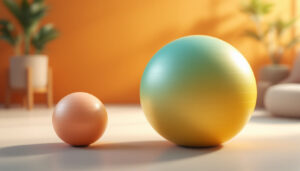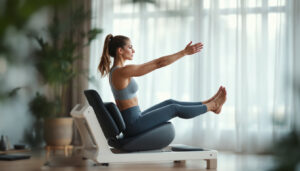Small Pilates Ball vs. Pilates Soft Ball: Which One Should You Choose?
Pilates has gained immense popularity over the years, attracting fitness enthusiasts who appreciate its low-impact yet effective workout regime. As you delve into the world of Pilates, you might come across various tools designed to enhance your practice, among which the small Pilates ball and the Pilates soft ball stand out. But how do you choose between them? This article will guide you through their characteristics and help you make an informed decision!
Understanding the Basics of Pilates Balls
To effectively choose between a small Pilates ball and a Pilates soft ball, it’s essential to understand what each of them is and how they function. Both tools aid in different exercises, offering unique benefits based on their design and material.
What is a Small Pilates Ball?
A small Pilates ball typically measures around 9 to 12 inches in diameter and is often filled with air. These balls are firm and provide stability, making them ideal for a variety of exercises that target core strength, balance, and flexibility.
The design of the small Pilates ball encourages proper body alignment and adds an element of instability to your workouts, challenging your muscles even further. They can be used during various Pilates routines, including traditional mat work and specific strength training routines. Incorporating a small Pilates ball into your regimen can also help enhance proprioception, which is your body’s ability to sense its position and movement in space. This heightened awareness can lead to improved coordination and agility, essential components for both athletic performance and everyday activities.
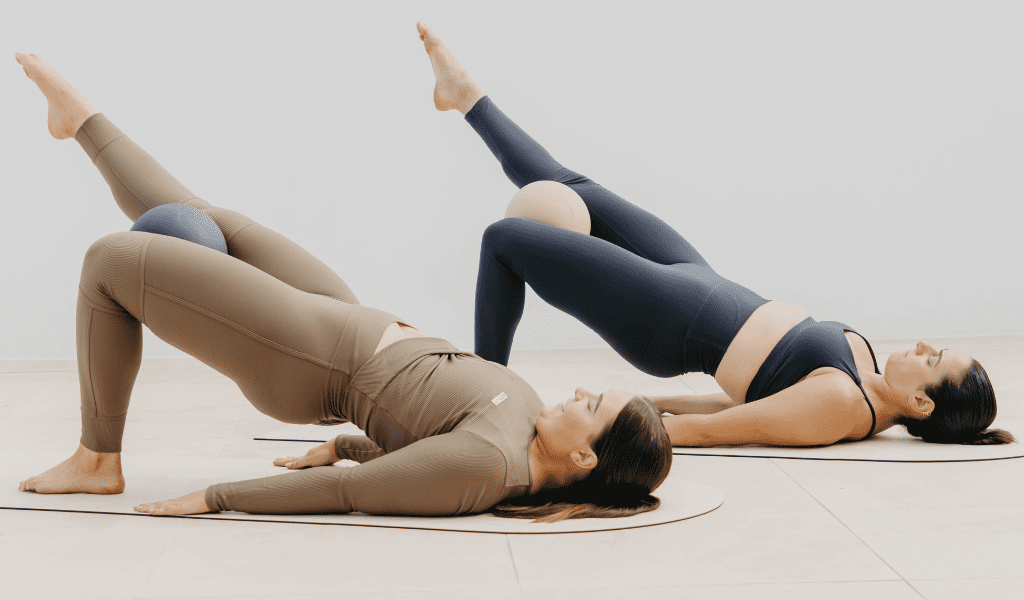
What is a Pilates Soft Ball?
On the other hand, a Pilates soft ball is generally larger, around 12 to 15 inches in diameter, and is designed to be much softer, often filled with air or a light foam. This versatility makes the Pilates soft ball suitable for gentle exercises and rehabilitation. It offers a cushion-like feel, which helps provide comfort during movements.
These balls are particularly useful for beginners or those recovering from injuries, as they can be used to perform low-impact exercises and enhance stability during workouts. Additionally, their soft texture allows for a more forgiving experience compared to firmer options. The Pilates soft ball can also be utilized in a variety of ways, such as for support during stretches or as a prop to assist in achieving deeper muscle engagement. By incorporating the soft ball into your routine, you can explore a range of movements that promote relaxation and mindfulness, making it an excellent tool for enhancing both physical and mental well-being.
See Also: The Benefits of Using a Pilates Wunda Chair for Strength and Flexibility
Key Differences Between Small Pilates Ball and Pilates Soft Ball
Understanding the differences between these two types of Pilates balls will shed light on which might be more suitable for your fitness journey. Each ball serves distinct purposes and can be incorporated into your routines based on your individual needs.
Size and Material Comparison
The clear difference begins with size and material. The small Pilates ball is firmer and more compact, making it great for balancing exercises that require stability. It has a higher bounce compared to the soft ball, which is advantageous for adding intensity to your workouts.
In contrast, the Pilates soft ball is larger and made from softer materials, providing a more comfortable feel. It is more versatile in terms of being able to support various exercises, especially those aimed at enhancing mobility and flexibility without the risk of strain. The soft ball’s design often includes a textured surface that helps with grip, making it easier to hold during dynamic movements. This feature can be particularly beneficial for individuals who may struggle with grip strength or coordination, allowing them to focus more on their form and technique.
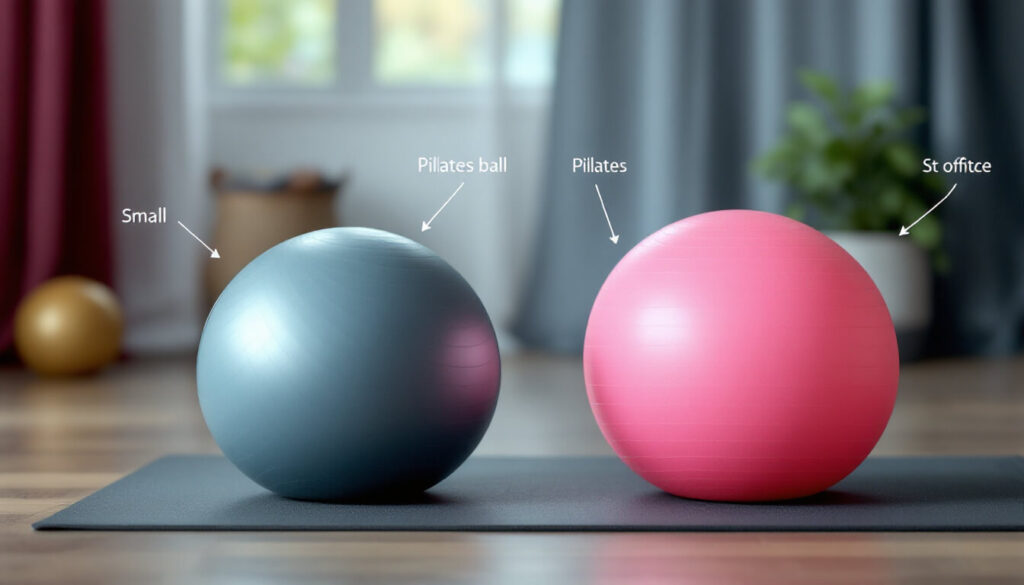
Functionality and Versatility
Functionality is another essential aspect to consider. The small Pilates ball is excellent for isolating muscle groups during workouts and is often used in tandem with traditional Pilates exercises to target abs, legs, and other core groups effectively. Its compact size allows it to fit snugly between the lower back and the floor during exercises like the bridge, providing additional support and enhancing the effectiveness of the workout.
On the flip side, the Pilates soft ball can be used in a wider range of exercises. It is particularly effective for working on flexibility and gentle stretches thanks to its soft nature, allowing users to perform movements that involve more range of motion. This versatility makes it a good choice for all levels of fitness, particularly for beginners. Additionally, the soft ball can be used for rehabilitation purposes, helping individuals recover from injuries by providing gentle resistance and support during their recovery exercises. Its ability to adapt to various fitness levels and goals makes it a staple in many Pilates studios and home workout routines alike.
Benefits of Using a Small Pilates Ball
Integrating the small Pilates ball into your routine provides several benefits that can enhance your overall workout experience. Here’s a deeper look at its advantages.
Enhancing Workout Intensity
The small Pilates ball can significantly increase the intensity of your routines. When placed under the back or legs, it can amplify the engagement of core muscles, leading to more effective workouts. This added challenge forces your body to stabilize itself, improving strength and endurance over time.
Moreover, it allows you to perform more advanced movements, pushing your limits and helping you achieve your fitness goals faster. If you seek a more challenging Pilates experience, the small Pilates ball is definitely the way to go!
Improving Balance and Stability
Another remarkable benefit is its capability to improve balance and stability. When performing exercises that require you to balance on the small ball, you engage multiple muscle groups, particularly in the core area. This engagement not only helps strengthen your muscles but also enhances your overall body coordination.
As you progress, you’ll find that your ability to maintain balance and posture during standard exercises improves, benefitting your overall fitness regimen. A strong core is essential for a variety of physical activities, and the small Pilates ball helps you build it effectively.
Boosting Flexibility
In addition to enhancing intensity and stability, the small Pilates ball can also play a significant role in improving flexibility. By incorporating the ball into stretches, you can achieve a deeper range of motion. For instance, using the ball to support your back during a seated forward bend can help you reach further and hold the stretch longer, promoting greater flexibility in your hamstrings and lower back.
Furthermore, the instability of the ball encourages your body to engage stabilizing muscles while stretching, which can lead to a more comprehensive and effective flexibility routine. Over time, this can contribute to a more agile and resilient body, reducing the risk of injury in both daily activities and more intense workouts.
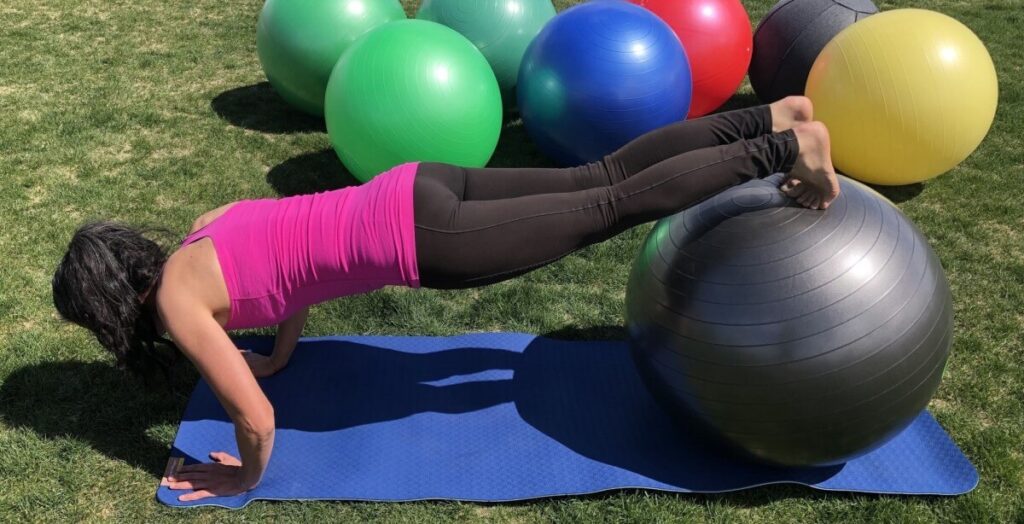
Enhancing Mind-Body Connection
Lastly, the small Pilates ball can enhance your mind-body connection, a crucial aspect of Pilates practice. As you focus on your movements and the way your body interacts with the ball, you cultivate a heightened awareness of your physical alignment and muscle engagement. This mindfulness can lead to better form and technique, ensuring that you reap the maximum benefits from each exercise.
Additionally, this increased awareness can translate into other areas of your life, helping you develop a more profound understanding of your body’s capabilities and limitations. As you become more in tune with your movements, you may find that your overall performance in various physical activities improves, fostering a sense of confidence and empowerment in your fitness journey.
Advantages of a Pilates Soft Ball
Though the small Pilates ball has its advantages, the Pilates soft ball also features unique benefits worth considering for your practice.
Gentle on the Body
First and foremost, the Pilates soft ball excels at being gentle on the body. Its softer texture makes it comfortable to use, even for those who may struggle with discomfort from hard surfaces. This allows users to focus on their movements without worrying about added strain.
This makes it a fantastic option for individuals recovering from injuries, allowing for a supportive approach to rebuilding strength and flexibility without risking further injury.
Ideal for Rehabilitation Exercises
Additionally, the Pilates soft ball is perfect for rehabilitation exercises. Physical therapists often recommend it due to its versatility and adaptability for balancing, gentle stretching, and strengthening exercises.
Its size and softness make it ideal for usage in various settings, whether at home or in a clinical environment, making it a valuable tool for individuals looking to recover or maintain their fitness levels.
Factors to Consider When Choosing Between the Two
Choosing the right Pilates ball ultimately depends on several factors aligned with your personal fitness journey. Here are some key considerations to aid your decision-making process.
Your Fitness Level and Goals
Your current fitness level and personal goals play a crucial role in determining the suitable ball for you. If you are a beginner or returning to fitness after an injury, starting with a Pilates soft ball can provide the necessary support while you build strength.
Conversely, if you have experience and are looking to challenge your limits, the small Pilates ball could be the better fit to enhance your workout intensity and help sculpt your body.
Comfort and Ease of Use
Finally, consider the comfort and ease of use. Experimenting with both options can help you find out which ball suits your body best. Some individuals may prefer the softness of a Pilates soft ball, while others might like the firmer challenge provided by the small Pilates ball.
Listen to your body’s feedback during workouts and select the option that feels right for your exercises and overall enjoyment.
In conclusion, both the small Pilates ball and the Pilates soft ball offer unique benefits that can enhance your Pilates practice. By considering your individual fitness level, personal goals, and preferences, you’ll be well-equipped to choose the right ball for your workouts. Happy exercising!
The Benefits of Using a Pilates Wunda Chair for Strength and Flexibility
The Pilates Wunda Chair is an innovative piece of equipment that offers a unique approach to fitness by enhancing strength and flexibility. Many enthusiasts have embraced it for its versatility, making it a valuable addition to any Pilates regimen. Let’s dive into how the Wunda Chair can elevate your Pilates practice.
Understanding the Pilates Wunda Chair
The Design and Functionality of a Wunda Chair
The Wunda Chair is a compact piece of equipment that typically features a sturdy wooden frame with a padded seat and a spring mechanism. Its design allows for a diverse range of exercises, focusing on both strength training and flexibility enhancement. Most models include foot pedals, which can be adjusted for different levels of resistance, enabling users to customize their workouts based on their individual fitness levels.
This adaptability means that whether you’re a beginner or an advanced practitioner, the Wunda Chair can effectively meet your needs. The chair operates on various resistance levels, allowing for a dynamic experience that can engage multiple muscle groups with every movement. Additionally, the chair’s compact size makes it an excellent choice for home workouts, fitting seamlessly into smaller spaces while still offering a full range of exercises. Users can perform everything from leg presses to seated twists, making it a versatile addition to any fitness regime.
The History and Evolution of the Wunda Chair
The origins of the Pilates designs Wunda chair can be traced back to Joseph Pilates, who created the chair as a tool for rehabilitation and strength training. Initially, Pilates designed this equipment to facilitate exercises for those with limited mobility, integrating principles that also benefit athletes. The chair was part of his broader vision to promote physical health through controlled movements, emphasizing the connection between mind and body.
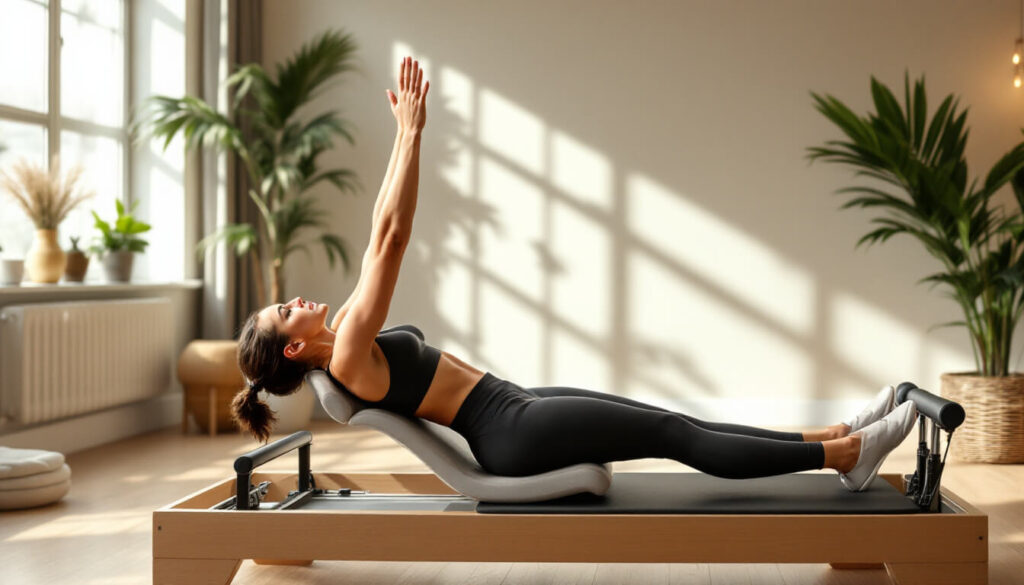
Over the years, the Wunda Chair has evolved, with modern variations enhancing its functionality and ergonomics. Today, many studios incorporate these chairs into their classes, showcasing how Pilates has grown while staying true to its roots. In contemporary practice, instructors often combine traditional Pilates techniques with innovative approaches, utilizing the Wunda Chair to target specific muscle groups and improve overall body alignment. This evolution reflects the ongoing commitment to adapt and refine Pilates methodologies, ensuring that practitioners of all levels can benefit from this timeless piece of equipment.
See Also: Small Pilates Ball vs. Pilates Soft Ball
The Role of Wunda Chair in Pilates
The Unique Features of Wunda Chair Workouts
One of the standout features of Wunda Chair workouts is their ability to promote core stability and alignment. By performing exercises on the chair, practitioners engage their core muscles, as well as other muscle groups, through a series of controlled movements. This not only strengthens the body but also improves balance and coordination.
Additionally, because the Wunda Chair challenges users to maintain control throughout each exercise, it fosters a deeper mind-body connection. Participants often find that this level of focus amplifies the benefits of traditional Pilates workouts. The chair’s design allows for a variety of positions and angles, which can be adjusted to suit individual needs and skill levels. This adaptability makes it an excellent tool for both beginners and advanced practitioners, as it can be tailored to provide the right amount of resistance and support.
Moreover, the dynamic nature of the Wunda Chair promotes functional movement patterns that mimic everyday activities. This practical application of Pilates principles helps individuals not only to build strength but also to enhance their overall physical performance in daily life. As users learn to control their movements on the chair, they often notice improvements in their posture and alignment, which can lead to reduced risk of injury and increased overall well-being.
How Wunda Chair Complements Other Pilates Equipment
Incorporating the Wunda Chair into your Pilates routine can enhance the effectiveness of other equipment, such as reformers or mats. For instance, exercises performed on the Wunda Chair can isolate specific muscle groups, providing a different experience than those workouts on a reformer.
This complementary nature allows practitioners to explore their strength and flexibility through varied movements. It encourages cross-training, where the benefits from one piece of equipment transfer to another, leading to comprehensive strength and flexibility development. The versatility of the Wunda Chair also means that it can be used to target both upper and lower body muscles, making it a valuable addition to any Pilates regimen. Exercises such as the ‘Elephant’ or ‘Push-Up’ on the chair engage the arms, shoulders, and legs, while also requiring core engagement, thus providing a full-body workout.
Furthermore, the Wunda Chair’s compact size makes it an ideal choice for those with limited space. Unlike larger reformers, the chair can easily fit into a home gym or studio setting, allowing for a diverse range of workouts without the need for extensive equipment. This accessibility encourages more people to incorporate Pilates into their fitness routines, promoting a healthier lifestyle and a greater appreciation for the art of movement.
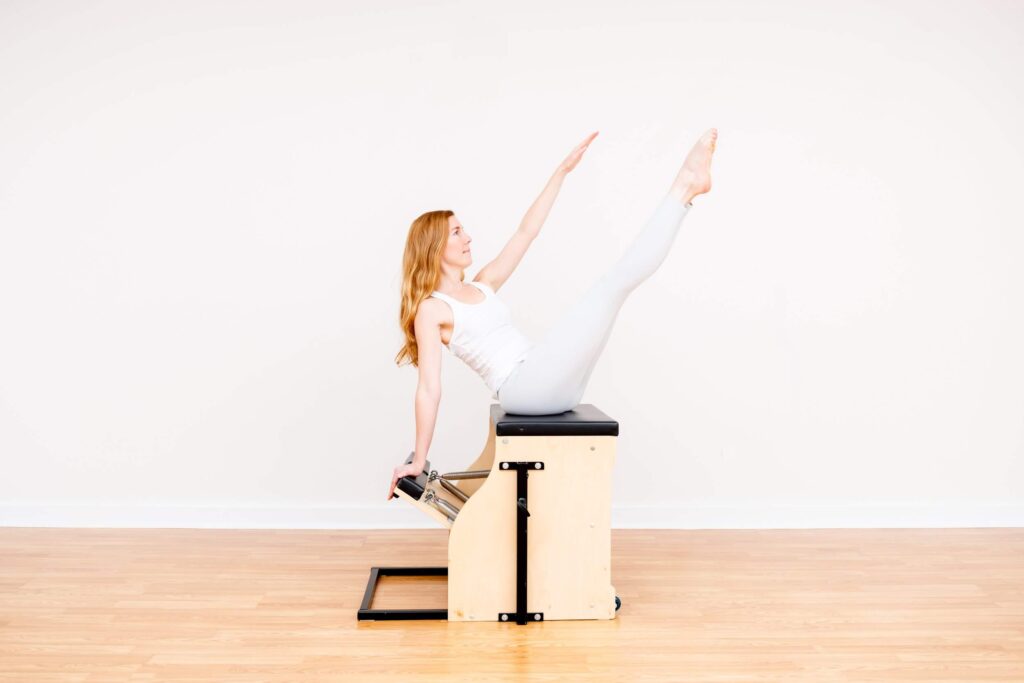
Enhancing Strength with Wunda Chair
The Mechanics of Strength Building in Pilates
Strength building with the Wunda Chair revolves around resistance training principles. The adjustable springs on the chair provide varied resistance levels, which challenge the muscles during contractions and require them to push against the resistance. This controlled environment is perfect for developing muscle strength safely and effectively. The unique design of the Wunda Chair allows practitioners to engage multiple muscle groups simultaneously, making it an efficient tool for strength training. By adjusting the spring tension, users can tailor their workouts to match their individual fitness levels and goals, ensuring that each session is both challenging and rewarding.
Moreover, the nature of Pilates emphasizes control, precision, and slow movements. This focus enhances not only muscular strength but also muscle endurance. As a result, regular Wunda Chair workouts can lead to significant improvements in overall muscle tone and definition. The integration of breath control into each exercise further amplifies the benefits, as it encourages mindfulness and helps to stabilize the core. This holistic approach not only strengthens the body but also fosters a deeper connection between mind and muscle, leading to improved body awareness and movement efficiency.
Specific Wunda Chair Exercises for Strength
There are numerous exercises that can be performed on the Wunda Chair to target strength building. Some notable ones include:
- Footwork: Engaging the legs and core while pressing against the pedals.
- Pull-ups: Focuses on upper body strength and core stability.
- Teaser: A challenging exercise that works the abdominal muscles intensely.
These exercises are just the tip of the iceberg. As you become more familiar with the chair, you can explore even more movements, allowing for continuous progression. For instance, the “Long Stretch” not only targets the arms and shoulders but also engages the entire body in a way that promotes balance and coordination. Similarly, the “Swan” exercise helps to develop back strength while opening up the chest, counteracting the effects of prolonged sitting and poor posture. Each of these movements can be modified to increase or decrease difficulty, providing a versatile workout that can grow with you as your strength improves.
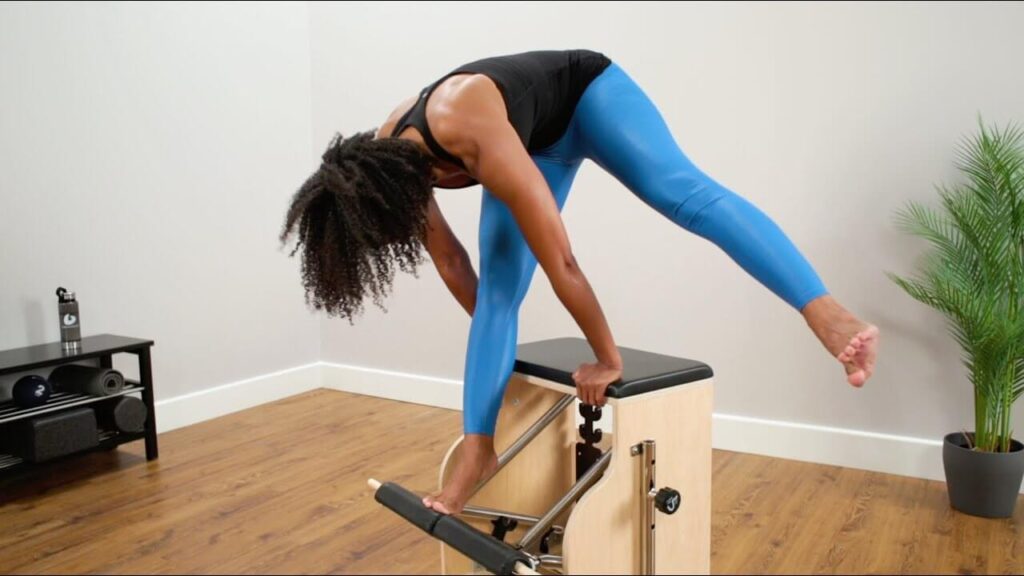
Boosting Flexibility with Wunda Chair
The Role of Flexibility in Pilates
Flexibility is a crucial component of Pilates, contributing to overall body health and performance. The Wunda Chair aids flexibility by encouraging gentle stretching through resistance. As you engage in movements designed for lengthening muscles, the chair’s resistance offers support, allowing for controlled movements that promote greater range of motion.
By focusing on flexibility, practitioners reduce their risk of injury, improve posture, and enhance athletic performance. This makes the Wunda Chair an excellent tool for anyone looking to improve their overall physical function.
Wunda Chair Exercises for Enhanced Flexibility
Some effective exercises for boosting flexibility on the Wunda Chair include:
- Seated Stretch: This pose allows for a gentle stretch of the hamstrings and lower back.
- Side Splits: Apart from stretching, this exercise engages the inner thigh muscles.
- Overhead Stretch: A fantastic way to enhance upper body flexibility and spinal mobility.
Each of these movements can be adjusted in intensity, making them versatile for practitioners at all levels.
Health and Wellness Benefits of Wunda Chair Pilates
Posture Improvement and Spinal Health
Utilizing the Wunda Chair significantly improves posture and spinal alignment. The chair promotes awareness of body mechanics, encouraging users to adopt proper form in everyday activities. Better posture not only enhances physical appearance but also alleviates strain on the spine and supporting muscles, promoting long-term spinal health.
Stress Reduction and Mental Wellbeing
Beyond the physical benefits, engaging in Pilates on the Wunda Chair can lead to improved mental wellbeing. The focus and control required during exercises allow practitioners to practice mindfulness, fostering a sense of calm and reducing stress levels.
Many individuals report enhanced mood and increased energy levels after consistent Wunda Chair workouts. The combination of physical exertion and mental focus serves as an excellent outlet for stress relief.
In conclusion, the Pilates Wunda Chair offers a multitude of benefits for those looking to enhance both their strength and flexibility. Its unique design, thoughtful history, and diverse exercise possibilities make it an essential tool for anyone interested in improving their overall fitness through Pilates.

